How to Delete a File in Microsoft Windows Using Batch Files
Part 1 of 5:
Finding the File's Information
-
 Find the file you want to delete. Go to the location of the file that you want to remove via Batch file.
Find the file you want to delete. Go to the location of the file that you want to remove via Batch file. -
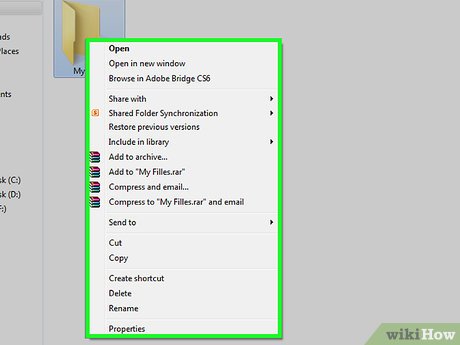 Right-click the file. Doing so prompts a drop-down menu.
Right-click the file. Doing so prompts a drop-down menu. -
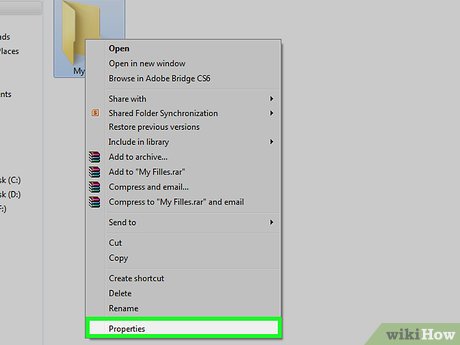 Click Properties. It's at the bottom of the drop-down menu. This will open a pop-up window.
Click Properties. It's at the bottom of the drop-down menu. This will open a pop-up window. -
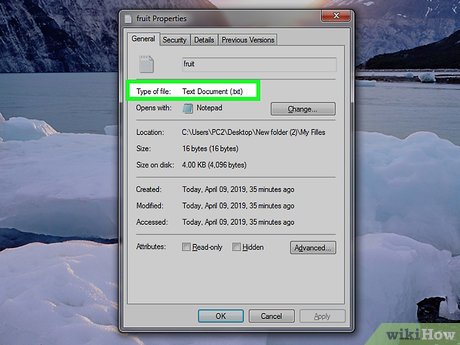 Determine the file's extension. In the "Type of file" section, look for the three- or four-letter extension in parentheses. This is the extension you'll need to add onto your file's name later.
Determine the file's extension. In the "Type of file" section, look for the three- or four-letter extension in parentheses. This is the extension you'll need to add onto your file's name later.- For example, if you have a text file, you'll see "Text Document (.txt)" to the right of the "Type of file" heading.
- If you see "File folder" listed as the file type, you'll have to close the Properties window, click once the file you want to check, and then right-click it again and click Properties.
-
 Copy the file's location. Click and drag your mouse across the address listed in the "Location" section of the Properties window, then press Ctrl+C. This will add the address to your computer's clipboard. At this point, you're ready to begin writing the Batch file.
Copy the file's location. Click and drag your mouse across the address listed in the "Location" section of the Properties window, then press Ctrl+C. This will add the address to your computer's clipboard. At this point, you're ready to begin writing the Batch file.
Part 2 of 5:
Writing the Batch File
-
 Open Start. Click the Windows logo in the bottom-left corner of the screen.
Open Start. Click the Windows logo in the bottom-left corner of the screen.
-
 Open Notepad. Type in notepad, then click Notepad at the top of the Start window. The Notepad window will open.
Open Notepad. Type in notepad, then click Notepad at the top of the Start window. The Notepad window will open. -
 Add the "Change Directory" command. Type in cd and press the spacebar, then paste in your copied address by pressing Ctrl+V and press ↵ Enter. This tells the command to look in the folder in which your file is stored.
Add the "Change Directory" command. Type in cd and press the spacebar, then paste in your copied address by pressing Ctrl+V and press ↵ Enter. This tells the command to look in the folder in which your file is stored.- For example, if your file is on the desktop, your command might read cd C:UsersYourNameDesktop.
- If you don't do this step, the "Delete" command will look for your file in a system folder instead.
-
 Enter the "Delete" command. On the line directly below the "Change Directory" command, type in del and press the spacebar.
Enter the "Delete" command. On the line directly below the "Change Directory" command, type in del and press the spacebar. -
 Enter the file's name and extension in quotation marks. Type a quotation mark, type in the file's name exactly as it appears (including spaces, special characters, and capitalization), type in a period and the file's extension, and type the closing quotation mark.
Enter the file's name and extension in quotation marks. Type a quotation mark, type in the file's name exactly as it appears (including spaces, special characters, and capitalization), type in a period and the file's extension, and type the closing quotation mark.- For a text file named "Bananas", for example, you would type in "Bananas.txt" as the file name and extension.
- At this point, the entire second line should read del "file name.extension" where "file name" is replaced by the file's name and ".extension" is replaced by the file's extension.
-
 Add more file names. If you want to delete multiple files from a folder, press ↵ Enter to start a new line, then type in del and a space followed by the other file's name and extension; repeat this process as needed until all of the files you want to remove are named in the file on their own lines.
Add more file names. If you want to delete multiple files from a folder, press ↵ Enter to start a new line, then type in del and a space followed by the other file's name and extension; repeat this process as needed until all of the files you want to remove are named in the file on their own lines.
Part 3 of 5:
Saving and Executing the Batch File
-
 Click File. It's in the top-left corner of the Notepad window. A drop-down menu will appear.
Click File. It's in the top-left corner of the Notepad window. A drop-down menu will appear. -
 Click Save As…. This option is in the drop-down menu. Doing so opens the Save As window.
Click Save As…. This option is in the drop-down menu. Doing so opens the Save As window. -
 Enter a file name with the Batch extension. Type whatever you want to name your Batch file into the "File name" text box, then type in .bat at the end of the file's name.
Enter a file name with the Batch extension. Type whatever you want to name your Batch file into the "File name" text box, then type in .bat at the end of the file's name.- For example, to name your Batch file "fruit", you would type in fruit.bat here.
-
 Click the "Save as type" drop-down box. You'll find this option near the bottom of the window. Clicking it prompts a drop-down menu.
Click the "Save as type" drop-down box. You'll find this option near the bottom of the window. Clicking it prompts a drop-down menu. -
 Click All Files. It's in the drop-down menu.
Click All Files. It's in the drop-down menu. -
 Select a save location. Click a folder on the left side of the window (e.g., Desktop) to select that folder as the place in which to save your Batch file.
Select a save location. Click a folder on the left side of the window (e.g., Desktop) to select that folder as the place in which to save your Batch file. -
 Click Save. It's in the bottom-right corner of the window. This will save your Batch file in the selected location.
Click Save. It's in the bottom-right corner of the window. This will save your Batch file in the selected location. -
 Know that your Batch file will permanently delete your files. When you run your Batch file, the "del" command will tell your computer to remove permanently the named files (as opposed to moving them to the Recycle Bin). Because of this, you should be careful when executing your Batch file.
Know that your Batch file will permanently delete your files. When you run your Batch file, the "del" command will tell your computer to remove permanently the named files (as opposed to moving them to the Recycle Bin). Because of this, you should be careful when executing your Batch file. -
 Run your Batch file. When you're ready to delete your named file(s), simply double-click the Batch file to run it. You should see the file(s) disappear after a moment.
Run your Batch file. When you're ready to delete your named file(s), simply double-click the Batch file to run it. You should see the file(s) disappear after a moment.
Part 4 of 5:
Clearing a Folder of One File Type
-
 Understand the purpose of this method. If you want to clear all files of a specific file type (e.g., text files) from a folder, you can use a Batch file. This is useful if you have a folder which automatically fills up with various files.
Understand the purpose of this method. If you want to clear all files of a specific file type (e.g., text files) from a folder, you can use a Batch file. This is useful if you have a folder which automatically fills up with various files. -
 Open the folder you want to clear. Double-click the folder that you want to clear to open it.
Open the folder you want to clear. Double-click the folder that you want to clear to open it. -
 Determine the extension for the files you want to delete. Do the following:
Determine the extension for the files you want to delete. Do the following:- Right-click the type of file you want to delete.
- Click Properties.
- Look at the extension in the "Type of file" section.
-
 Copy the folder's address. Click the address bar at the top of the folder to highlight the address, then press Ctrl+C to copy it.
Copy the folder's address. Click the address bar at the top of the folder to highlight the address, then press Ctrl+C to copy it.- If clicking the address bar doesn't highlight the address, click and drag across the address to highlight it.
-
 Open Notepad. Click Start, type in notepad, and click Notepad when it appears at the top of the Start menu.
Open Notepad. Click Start, type in notepad, and click Notepad when it appears at the top of the Start menu.
-
 Tell the file to select your folder's address. Type in cd and press the spacebar, then press Ctrl+V to paste in the folder's address.
Tell the file to select your folder's address. Type in cd and press the spacebar, then press Ctrl+V to paste in the folder's address. -
 Enter the "Delete" command. Press ↵ Enter to start a new line below the first one, then type in del and press the spacebar.
Enter the "Delete" command. Press ↵ Enter to start a new line below the first one, then type in del and press the spacebar. -
 Tell the file to look for your preferred file type. Instead of typing in a specific file's name, you'll type in a quotation mark, an asterisk, the extension, and another quotation mark. This tells your computer to delete any files ending in your specified extension.
Tell the file to look for your preferred file type. Instead of typing in a specific file's name, you'll type in a quotation mark, an asterisk, the extension, and another quotation mark. This tells your computer to delete any files ending in your specified extension.- For example, if you want to empty the folder of text files, your "Delete" line would say del "*.txt".
-
 Add more file types if necessary. If you want to empty the folder of more than one file type, start a new line by pressing ↵ Enter, then type in the "Delete" command followed by the extension for the file type.
Add more file types if necessary. If you want to empty the folder of more than one file type, start a new line by pressing ↵ Enter, then type in the "Delete" command followed by the extension for the file type. -
 Save your file as a Batch file. Do the following:
Save your file as a Batch file. Do the following:- Click File.
- Click Save As....
- Type whatever you want to name your Batch file followed by .bat into the "File name" text box.
- Click the "Save as type" box, then click All Files.
- Select a save location on the left side of the window, then click Save.
-
 Run your file whenever you need to clear the folder. Simply double-click the Batch file to do so. This will remove any file(s) matching your specified extension(s) from the folder.
Run your file whenever you need to clear the folder. Simply double-click the Batch file to do so. This will remove any file(s) matching your specified extension(s) from the folder.- If you ever move the folder, you'll need to edit the Batch file to include the updated folder's address.
Part 5 of 5:
Emptying a Folder of All Files
-
 Understand how this works. If you want to remove an entire folder's file contents without deleting the subfolders inside of the main folder, you can use a Batch file to do so.
Understand how this works. If you want to remove an entire folder's file contents without deleting the subfolders inside of the main folder, you can use a Batch file to do so.- This method won't delete folders inside of the directory, but it will remove all files from those folders.
-
 Right-click the folder you want to clear. This will open a drop-down menu.
Right-click the folder you want to clear. This will open a drop-down menu. -
 Click Properties. It's at the bottom of the drop-down menu. Doing so opens the Properties window.
Click Properties. It's at the bottom of the drop-down menu. Doing so opens the Properties window. -
 Copy the folder's location. Click and drag your mouse across the address in the "Location" section, then press Ctrl+C.
Copy the folder's location. Click and drag your mouse across the address in the "Location" section, then press Ctrl+C. -
 Open Notepad. Click Start, type in notepad, and click Notepad when it appears at the top of the Start menu.
Open Notepad. Click Start, type in notepad, and click Notepad when it appears at the top of the Start menu.
-
 Enter the "Change Directory" command along with the folder's address. Type in cd and press the spacebar, then press Ctrl+V to paste in the folder's address.
Enter the "Change Directory" command along with the folder's address. Type in cd and press the spacebar, then press Ctrl+V to paste in the folder's address. -
 Enter the command to delete all files without confirmation. Press ↵ Enter to start a line below the "Change Directory" command, then do the following:
Enter the command to delete all files without confirmation. Press ↵ Enter to start a line below the "Change Directory" command, then do the following:- Type in del and then press the spacebar.
- Type in /S /Q and then press the spacebar. The "/S" ensures that any folders inside of the main folder also have their files deleted, and the "/Q" removes the confirmation prompt.
- Paste in the folder's address from earlier.
- Type in a backslash ().
- Type in the folder's name exactly as it appears in the address bar when you open the folder.
-
 Save your file as a Batch file. Do the following:
Save your file as a Batch file. Do the following:- Click File.
- Click Save As....
- Type whatever you want to name your Batch file followed by .bat into the "File name" text box.
- Click the "Save as type" box, then click All Files.
- Select a save location on the left side of the window, then click Save.
-
 Run your Batch file when needed. Whenever you want to clear out the folder and its subfolders, double-click the Batch file.
Run your Batch file when needed. Whenever you want to clear out the folder and its subfolders, double-click the Batch file.
3.7 ★ | 3 Vote
You should read it
- How to Zip Folder on Windows
- What is a folder The concept of a file (File) and a folder (Folder) in a computer
- How to Convert XCF to JPG
- How to Lock a Folder on Windows
- How to Zip a File in Windows
- How to Set Password for Folder and File in Windows
- How to save files to multiple folders on the web browser
- Open the file, open the folder with a mouse click
May be interested
- How to move files by type in Windows with batch files
 one way to move files in batches as needed, is to use the batch file. with the following command, you can easily move files by type from one folder to another.
one way to move files in batches as needed, is to use the batch file. with the following command, you can easily move files by type from one folder to another. - Delete the most 'stubborn' files on Windows
 delete stubborn files, delete files that cannot be erased to free up memory, and prevent computer trash. but how to delete these stubborn files? please read our instructions below.
delete stubborn files, delete files that cannot be erased to free up memory, and prevent computer trash. but how to delete these stubborn files? please read our instructions below. - How to view recently deleted files on Windows 10?
 usually when you delete any file on a windows 10 computer by right-clicking on the file and selecting delete or selecting the file then pressing the delete key, then the file will be moved to recycle bin. or another way to permanently delete files is to press shift + delete, and windows will move these files from recycle bin.
usually when you delete any file on a windows 10 computer by right-clicking on the file and selecting delete or selecting the file then pressing the delete key, then the file will be moved to recycle bin. or another way to permanently delete files is to press shift + delete, and windows will move these files from recycle bin. - How to View Recently Deleted Files on Windows 10/11?
 normally, when you delete any file on your windows 10 computer by right-clicking on the file and selecting delete or selecting the file and pressing the delete key, the file will be moved to the recycle bin. or another way to delete files permanently is to press the shift + delete key combination, and windows will move these files from the recycle bin.
normally, when you delete any file on your windows 10 computer by right-clicking on the file and selecting delete or selecting the file and pressing the delete key, the file will be moved to the recycle bin. or another way to delete files permanently is to press the shift + delete key combination, and windows will move these files from the recycle bin. - 2 ways to permanently delete files on Windows
 normally, when deleting a file on windows, the file will not be deleted immediately but will be saved in recycle bin. after that, you will have to do one more step to clear the trash. but if you do not want to take this second step, we will guide you how to permanently delete a file in the article below. please consult.
normally, when deleting a file on windows, the file will not be deleted immediately but will be saved in recycle bin. after that, you will have to do one more step to clear the trash. but if you do not want to take this second step, we will guide you how to permanently delete a file in the article below. please consult. - Completely delete data in Windows
 in the windows operating system, when you delete a file by pressing the delete button on the keyboard, only the directly related components of the file are removed from the file system table, or in the words. another is that the file still exists on the hard drive until another file is overwritten. so have to do
in the windows operating system, when you delete a file by pressing the delete button on the keyboard, only the directly related components of the file are removed from the file system table, or in the words. another is that the file still exists on the hard drive until another file is overwritten. so have to do - Delete files that cannot be deleted on Windows using the following software
 besides manual file deletion, you can use file deletion software for windows to delete unrecoverable files, corrupted files.
besides manual file deletion, you can use file deletion software for windows to delete unrecoverable files, corrupted files. - What is a .tmp file? How to open .tmp file on Windows computer?
 the article provides information about what a tmp file is, how to open a tmp file, how to delete a tmp file and answer frequently asked questions about tmp files. nguyen humanity what is the generated tmp file? let's see it now!
the article provides information about what a tmp file is, how to open a tmp file, how to delete a tmp file and answer frequently asked questions about tmp files. nguyen humanity what is the generated tmp file? let's see it now! - How to safely delete sensitive files on Windows 11
 when you tell windows to delete a file, you usually want it gone forever. however, some data recovery applications and services can restore those files even if you think they've been completely deleted.
when you tell windows to delete a file, you usually want it gone forever. however, some data recovery applications and services can restore those files even if you think they've been completely deleted. - Fix the error that OneDrive files or folders could not be deleted
 onedrive is quite popular among windows 10 users due to its ability to connect multiple devices and keep files in sync between them. however, sometimes it will crash and prevent you from deleting files or folders.
onedrive is quite popular among windows 10 users due to its ability to connect multiple devices and keep files in sync between them. however, sometimes it will crash and prevent you from deleting files or folders.









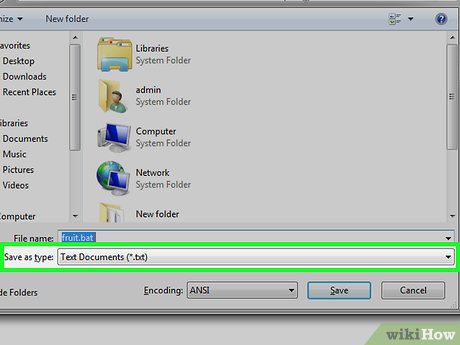
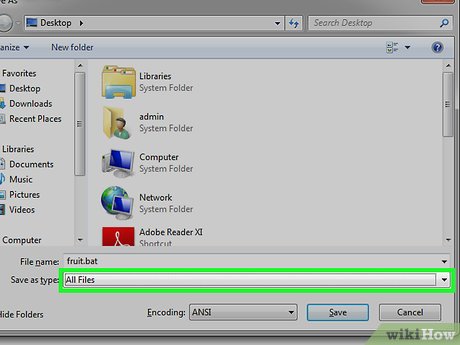











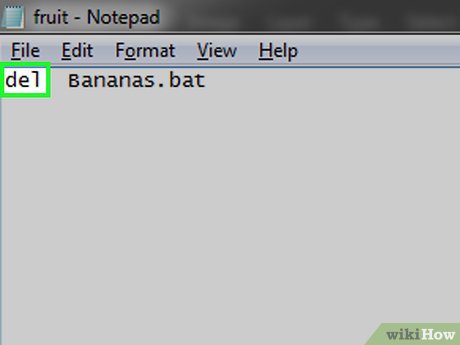
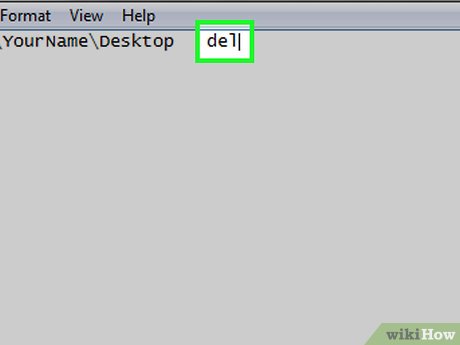























 How to Block an Application or .EXE from Running in Windows
How to Block an Application or .EXE from Running in Windows How to Open an Img File on PC or Mac
How to Open an Img File on PC or Mac How to Make a New File in Windows
How to Make a New File in Windows How to Run a BAT File on Windows
How to Run a BAT File on Windows How to Find a File's Path on Windows
How to Find a File's Path on Windows How to Open ISO Files
How to Open ISO Files